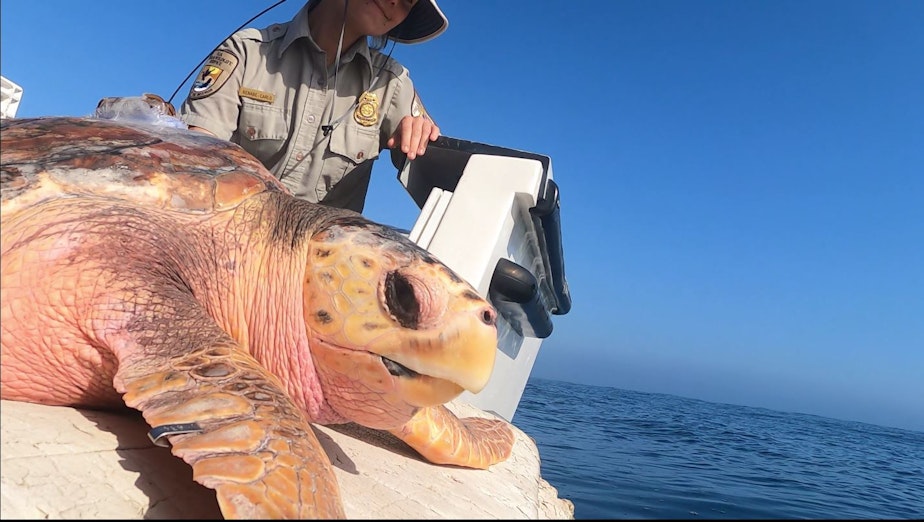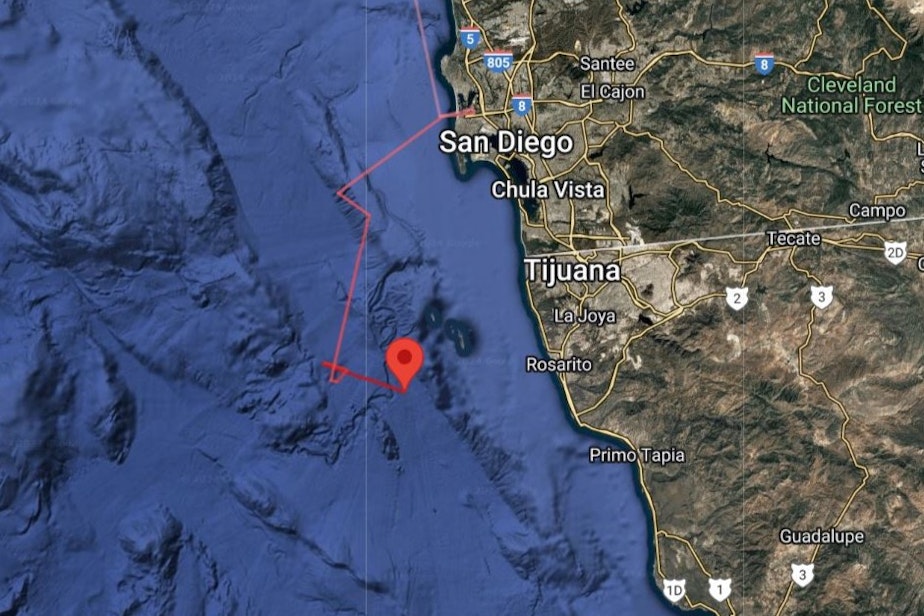Cold, lost sea turtle is returned from the Northwest to warm California waters

Moira, a subtropical turtle that was found nearly dead in the Strait of Juan de Fuca between Washington and British Columbia, has been returned to more suitable waters near San Diego.
A father and son out fishing off the southern tip of Vancouver Island in February spotted the 80-pound loggerhead turtle floating listlessly in a kelp bed, with a core body temperature of just 52 degrees Fahrenheit.
Loggerheads are an endangered species in the United States and Canada and a rare visitor this far north. The February appearance was only the second confirmed loggerhead sighting on Canada’s west coast and the first confirmed in the Salish Sea, the shared inland waters of British Columbia and Washington.
The Vancouver Aquarium took in the hypothermic turtle, nursed her back to health, and gave her a name: Moira, after the Catherine O'Hara character Moira Rose in the TV comedy “Schitt’s Creek.”
RELATED: Warm-water turtle rescued from Salish Sea after fishermen find her stunned by cold
“With their population dwindling, each turtle —particularly females, who are essential to the species' reproductive capacity — plays a vital role in their survival,” a Vancouver Aquarium press release states.
A nonprofit called Turtles Fly Too, which uses small planes to transport endangered species, medevacked Moira to San Diego on Monday. She spent two days under observation at SeaWorld California, where veterinarians assessed her diving abilities and her fitness for return to the wild.

 1 min
The loggerhead sea turtle Moira is returned to the Pacific Ocean outside of San Diego Bay on Oct. 23, 2024.
1 min
The loggerhead sea turtle Moira is returned to the Pacific Ocean outside of San Diego Bay on Oct. 23, 2024.
On Wednesday, on a boat 8 miles out to sea, U.S. Fish and Wildlife Service and SeaWorld staffers hoisted Moira by her shell and set her on a piece of foam padding at water’s edge. With some encouragement and apparently a push from behind, Moira slipped off the boat and into thousand-foot-deep waters off San Diego Bay, then swam away.
The small satellite transmitter glued to her shell showed that, within a day, she had swum dozens of miles and crossed the border into Mexican waters.
You can track Moira’s movements here.

According to the nonprofit Center for Biological Diversity, entanglement in gill nets and other fishing gear is a major threat to loggerhead turtles in Mexican waters.
Mexican government scientists reported finding more than 1,000 dead loggerheads on beaches in the southern half of Baja California in 2020.
While conservation groups blamed fishing gear entanglement for the large number of turtle strandings, Mexican officials said the strandings peaked during months when little to no fishing was taking place.
U.S. and Mexican conservation groups have urged the Mexican government to step up law enforcement at sea to ensure that laws aimed at protecting sea turtles from fishing nets are being followed.
Moira likely hatched on a beach in southern Japan 15 to 20 years ago, swam 6,000 miles to Mexico, then somehow wound up off the Washington and British Columbia coast mid-winter, where she was stunned by the cold.
Sea turtles regularly move north when conditions are warm and usually have problems if they don’t migrate away before waters cool again in the fall, according to biologist Gavin Hanke with the Royal British Columbia Museum.





